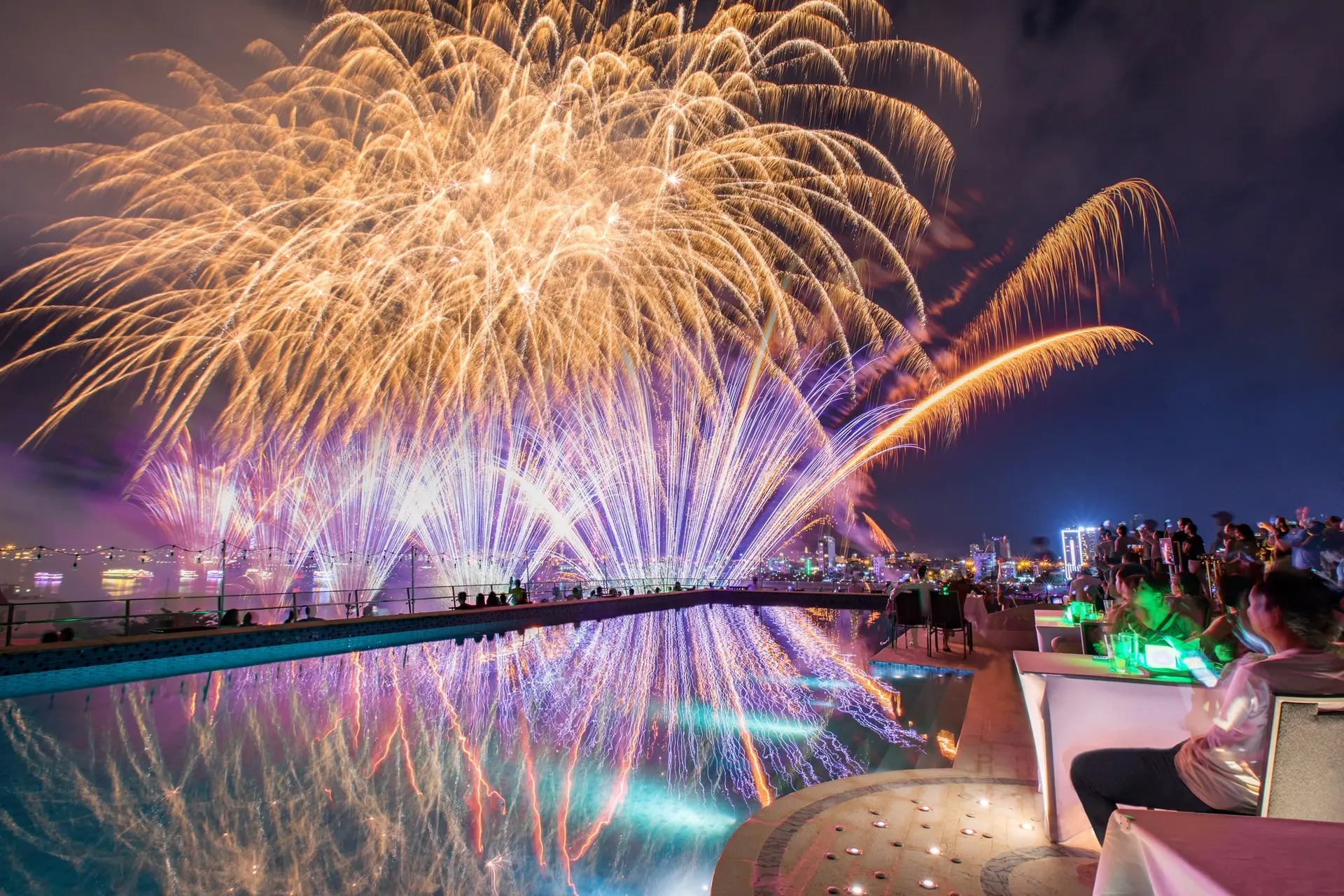Unique places to stay in Da Nang
Tam House Villa Hotel Tam House Villa Hotel is a peaceful "green oasis" in the heart of the vibrant city of Da Nang. The hotel's location is also very convenient, only a 10-minute drive to Chi Lang Stadium, the Children's Cultural Center, and popular entertainment destinations such as Asia Park and Sun Wheel, along with the Korean Market and the nearby Da Nang International Airport. A short walk from My Khe Beach, this 3-star hotel offers guests an ideal resort space, harmoniously combining modern amenities and natural beauty. Tam House Villa Hotel is built on an area of nearly 700m², including 15 beautiful apartments, each with an area of 40-60m² with an open and eco-friendly design. Tam House's room types are specially designed to meet the needs of visitors: Pool View apartments allow you to step right into the pool from the door of the room; The Deluxe Room offers a private space with full amenities, ideal for those who love tranquility; and Family Room with two King and Queen beds, suitable for families or groups of friends. With a unique architecture, each room at Tam House is designed to give you the closest feeling to nature. Natural light floods through the large windows, harmoniously combining with the bright colors of the interior, creating a lively and vibrant space. The front and back spaces of each room are designed as an extension, helping you fully enjoy the green beauty of this small oasis. Address: 209/27 Nguyen Van Thoai, Son Tra District, Da Nang City. Phone: 0936 577 477 https://www.facebook.com/tamhousevillahotel/?locale=vi_VN Photo: Fb Tam House Villa Hotel The Memory - Danang The Memory - Danang is an Airbnb that celebrates the value of Vietnamese craft arts and crafts through every little detail in architecture and design. From ancient tile roofs, cool polished stone walls to handcrafted copper products, all evoke a simple but delicate beauty. Visitors can feel the meticulous carvings on the walls, or watch the daily living spaces of local fishermen recreate right in the heart of the hotel. Each small corner here hides a story about culture and history, helping you have more memorable moments during your vacation. At The Memory - Danang, visitors will experience a relaxing bathing service under the cool sandstone walls, combining the use of naturally scented handmade soap and washing their hair with traditional lemongrass bodhisattva. In particular, the sleeping space here is designed to be airy, taking advantage of natural light and sea breeze, bringing you a good night's sleep after a long day exploring the city. The Memory - Danang brings comfort to help you experience Vietnamese culture right in every moment of rest. The Memory also owns a relaxing garden in the heart of Da Nang - The Memory Bar. After a long busy day, there is nothing better than sitting with friends over a cocktail or coffee, chatting with funny bartenders, watching them meticulously prepare drinks. In the unique architectural space of The Memory, the melodious jazz music and the cool sea breeze blowing, all worries will gradually disappear. Coming to The Memory - Danang, you will be taken care of, from meals to sleep, to fully enjoy every moment of relaxation. Address: 202 Ho Nghinh, Son Tra District, Da Nang City. Phone: 0236 3937 597 https://www.facebook.com/thememorydanang/ Photo: Fb The Memory - Danang Chi House Danang Hotel and Apartment Chi House Danang Hotel and Apartment is located in a prime location, right next to My Khe beach and only a 10-minute drive from Da Nang city center, allowing visitors to easily visit popular tourist attractions such as Marble Mountains, Hoi An and Son Tra Peninsula. This hotel is designed in a modern Eco-chic style, focusing on green space, with 49 rooms fully equipped and using eco-friendly materials such as rattan, bamboo, and natural wood. The rooms all have an open space with a spacious balcony, bringing a feeling of relaxation and closeness to nature. Highlights in the design include plaster ceilings, leaf-style ceiling fans, and luxurious interiors that combine wooden chairs and modern sofas. Chi House owns a diverse system of rooms, from Deluxe Double/Twin rooms suitable for couples, to luxurious Penthouse apartments with panoramic views of My Khe beach. In addition, Chi House also offers a variety of high-end services such as a semi-outdoor infinity pool, gym, spa, restaurant, and luxury bar with an extensive menu from local cuisine to international cuisine. This place not only brings a comfortable resort space but also focuses on environmental protection, creating harmony between modern architecture and nature, ideal for visitors who want a relaxing vacation in the heart of this beautiful coastal city. Address: 42 Lam Hoang, Phuoc My Ward, Son Tra District, Da Nang City. Phone: 0236 3823 838 https://www.facebook.com/ChiHouseDanang/?locale=vi_VN Photo: Fb Chi House Source: wowweekend

























